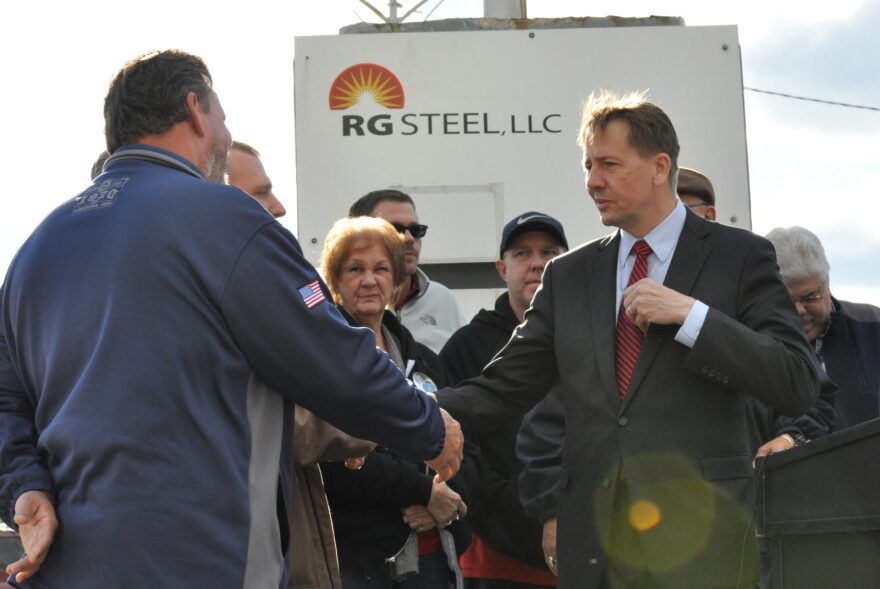About two weeks out from Election Day, a dozen United Auto Workers and United Steelworkers came out to the small eastern city of Warren, Ohio. They were there to support the Democratic ticket for governor, Richard Cordray and his running mate Betty Sutton.
An abandoned guard shack and an RG Steel sign were the only clues that a steel plant — once employing up to 5,000 people — once stood behind the chain-link fence.
Nearing the end of a tight race, the Cordray campaign is focusing on places like Warren, nearby Youngstown and the surrounding Mahoning Valley. This rural, white working-class part of the state supported Barack Obama in 2012 but made a dramatic swing toward Donald Trump in 2016.
Cordray went to small businesses and union members to deliver a message meant to win those votes back.
“What you do if you’re running for office in Ohio, you need to understand what’s on people’s minds,” Cordray said. “And for us, that’s protecting access to affordable health care, improving education and training, and spreading out opportunity across the state.”
‘Let’s Not Talk Too Much About It’
One thing that didn’t come up at the Cordray rally: guns.
Several national polls have shown unprecedented support for gun control measures. In a race as close as this one, many Democrats would use that to their advantage.
Ohio’s gun laws fall on the permissive end of the spectrum. As a ‘shall issue’ state, it is easier to get a concealed carry permit than in some states. Ohio doesn’t have additional restrictions on gun purchases beyond federal requirements, as some states do. And in 2007, the state legislature took away cities’ authority to enact gun restrictions.




